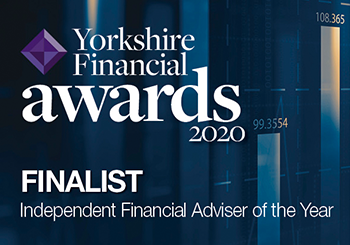Calculating your investment risk profile

The investment market has been experiencing volatility lately and it may mean you’re considering whether your current risk profile is still appropriate. All investments carry some risk but there are numerous different risk profiles to consider; what’s right for one person can be very different from another.
Calculating the level of risk you can afford to take with your investments can be complex, there are numerous different factors to consider, including these six:
1. Timeframe: One of the first things to consider is how long you’ll remain invested for; the minimum timeframe should be five years. Historically, markets have delivered returns over the long term, but in the short term, values can rise and fall. The longer you’re in the market the more time you have to ride out these dips and reduce the risk of losing some of your capital. Therefore, as a general rule of thumb, the longer you plan to invest for the more risk you can take. Of course, this isn’t the only factor you should consider when you’re making investment plans.
2. Capacity for loss: All investments carry some risk, as a result, you should ask yourself how you’d feel if you were to lose some of your capital. No one wants to think about losing money they’ve invested, but understanding the potential implications of doing so and your capacity for loss is crucial before you forge ahead. If investment values decreasing could harm your financial security, it’s typically a good idea to look at alternatives to investing.
3. Investment goals: What do you want to get out of investing? Do you want to grow your wealth as much as possible or create a portfolio that will deliver a reliable income? These two goals are likely to lead to very different investment strategies, so it’s important to define what you want to achieve through investing early on. Whilst goals are important, they shouldn’t be the sole focus. Taking a high-risk strategy because you want the opportunity to realise significant returns could seriously affect your financial security if you don’t have the capacity for loss, for example.
4. Current investments: If you already have investments, these should play a role in any new investments you plan to make. Your entire portfolio should consider diversification and spreading risk as much as possible. Holding a significant portion of your investment portfolio in a single industry, for instance, would mean any downturns in this area would have a far greater impact. On the other side, spreading risk means you have a chance to take advantage of more opportunities too.
5. Other assets: As recent market conditions have highlighted, investments can and do experience volatility. This can mean the value of your investments decreases at points. Should you need to, do you have other assets you can fall back on? Ideally, you shouldn’t invest without first building up an emergency fund at least. Looking at what other assets you have is critical for calculating your overall financial resilience and therefore the level of risk you can afford to take.
6. Overall attitude to risk: Whilst it’s important to keep the above factors in mind, it’s also important that you feel comfortable with any financial decisions you make. Taking the time to understand how and why the above influence should play a role in investment decisions can help you make the right choice for you. Ultimately, though, your overall attitude to risk and investing will play a role too. You may be in a position to accept a higher level of risk, but if this leaves you feeling worried and concerned about your financial security, for example, there may be alternatives that are better suited to your views.
Remember; regularly reviewing your investment risk is important. As priorities and goals change, investments that were once right for you may no longer be. Likewise, you may find that as your wealth increases, there are new investment opportunities to be taken advantage of. Your investment strategy should be reviewed in line with your wider financial plan and aspiration to ensure it still accurately reflects your goals.
If you’d like to reassess your current investment portfolio or have further assets to invest, we’re here to help you understand how your risk profile should influence decisions.
Please note: The value of your investments can go down as well as up and you may not get back the full amount you invested. Past performance is not a reliable indicator of future performance.






